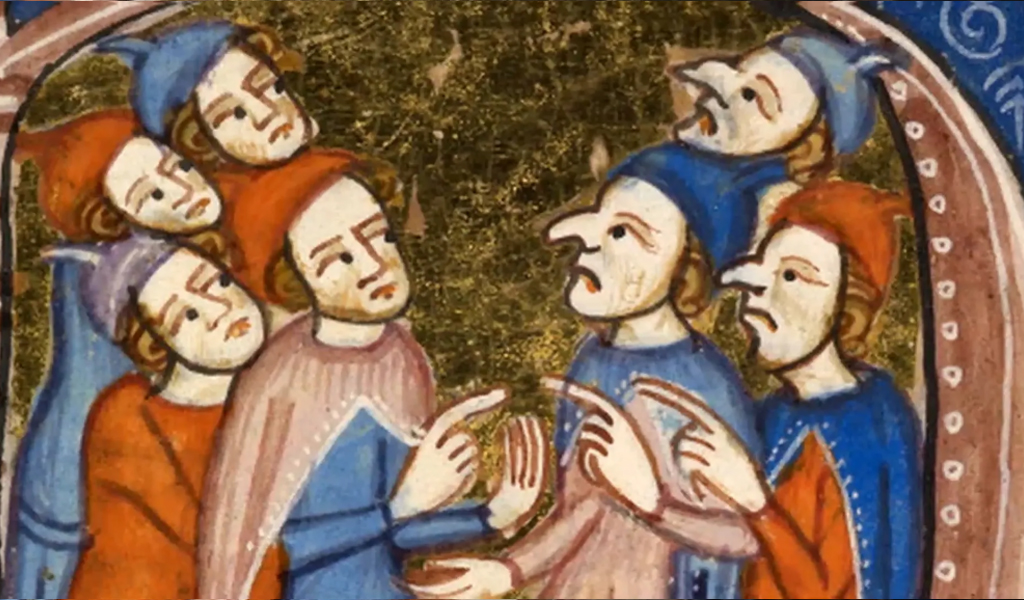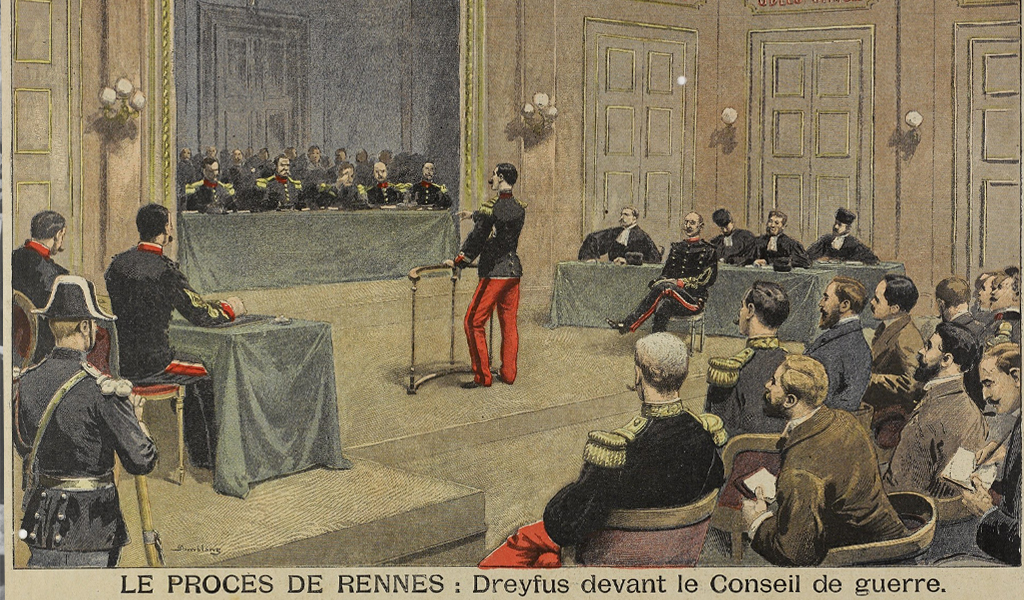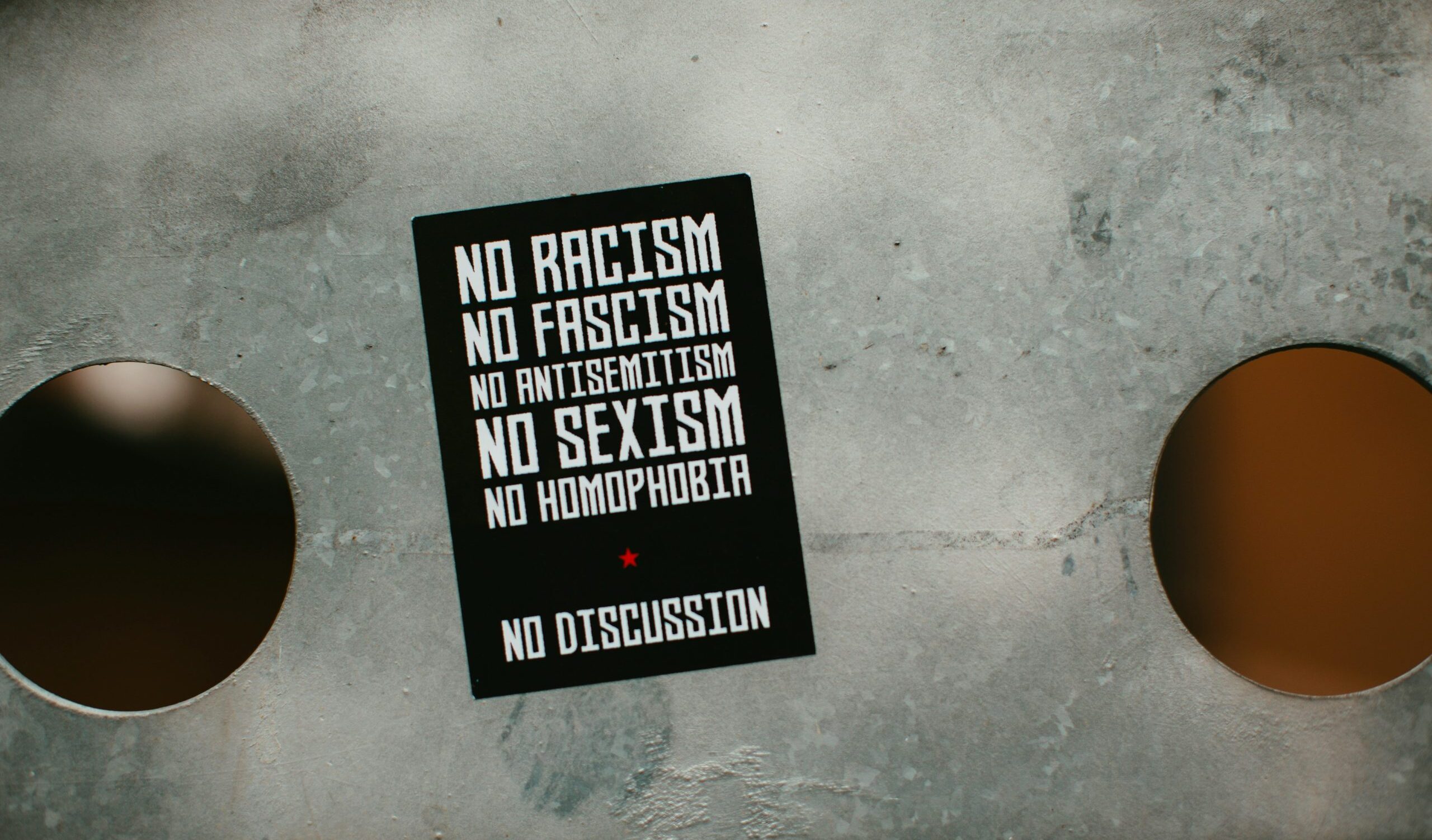Persecution of Jews from Muhammad to the present day
Assertion
Anti-Semitism is a European problem that was imported into the Muslim world and was only fueled there by the founding of Israel, they say.
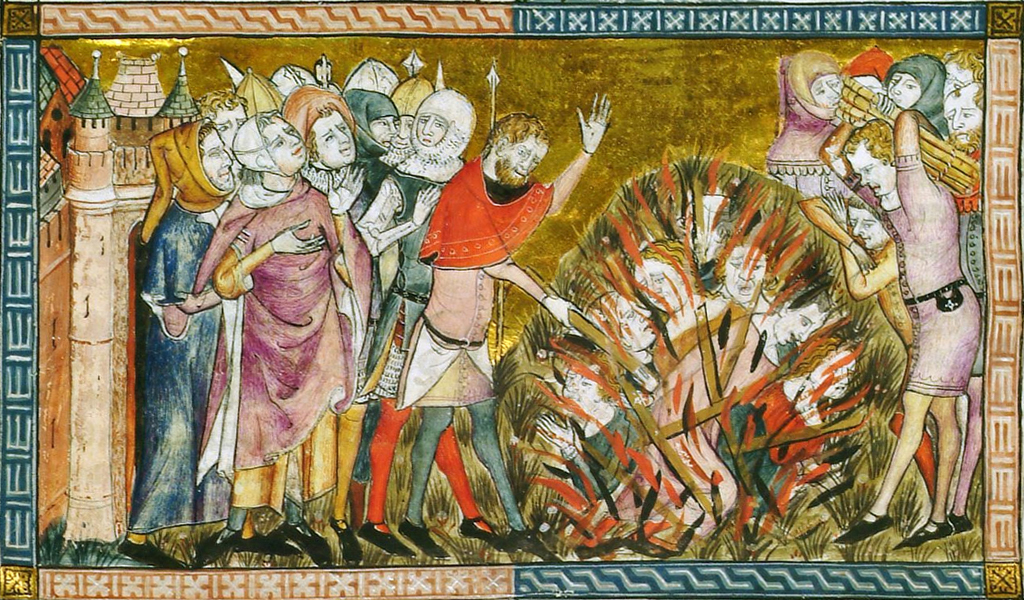
The facts
Anti-Semitism and the persecution of Jews have always been rooted in Islam. The founder of Islam, Mohammed, had the first massacre of Jews carried out in Medina, where he resided, in 627 AD. Hundreds of Jews were murdered and others enslaved because they refused to convert to Islam. In the Middle Ages and in the centuries that followed, there were repeated pogroms against Jews in the Islamic dominions and they – like Christians – were discriminated against and treated as second-class citizens. The best-known Muslim anti-Semite in the 20th century was Mohammed al-Husseini, the Mufti of Jerusalem, who was a guest of Adolf Hitler in Berlin from 1941 to 1945 and set up a Muslim SS division in the Balkans.
The barbaric murder of over 1,200 children, young people, women and men in southern Israel on 7 October 2023 by the Palestinian terrorist organization Hamas has on the one hand led to a huge wave of solidarity with Israel and the Jews. On the other hand, it has given rise to extreme anti-Semitism not only in the Islamic world, but also in Europe, particularly among Muslims.
This may only surprise those who were previously naive enough or too ignorant. After all, anti-Semitism has always been widespread in Muslim communities.
Hamas in the Arab tradition: The pogrom of 1929
Anyone who believes that the barbarism of the Hamas terrorists was a novelty is mistaken. In his book “The Eternal Scapegoat”, published in 2009 and well worth reading, Tilman Tarach quotes eyewitness accounts of the pogrom on August 23, 1929 in the British Mandate of Palestine.
At that time, 133 Jews were tortured, desecrated and killed by an Arab mob in Hebron and other Palestinian settlements to battle cries such as “The law of Muhammad will be enforced with the sword” in the same cruel manner as the Hamas massacre on October 7, 2023. A further 300 were injured and 8,000 were displaced.
The British forces of law and order largely stood idly by and watched these appalling goings-on. The written accounts of the survivors of that time do not differ in any way from the accounts of the survivors of October 7, 2023.
Islamic anti-Semitism
Hatred of Jews goes back to the time of Muhammad. Anti-Semitism and the persecution of Jews have been rooted in Islam ever since.
This is shown in detail by the Islamic scholar Abdel-Hakim Ourghi, who teaches at the University of Education in Freiburg i. Breisgau, in his book “Die Juden im Koran – Ein Zerrbild mit fatalen Folgen”.
Muhammad, the founder of Islam, met with massive resistance to his doctrine of a single God in his birthplace of Mecca, which was polytheistic at the time, so he fled to Medina with a small following in 622 AD. Here too: Rejection. This time, it was mainly the Jews who accused Muhammad of copying from their traditions. He accused them of distorting the word of God (Quran: Sura 2, verse 75), taking usurious interest (5:42) and being swindlers (9:34). They would end up in hell for this (2:174). God had already cursed the Jews before (2:88) and turned some of them into apes and pigs (5:60). Finally, Muhammad began to use violence against the three Jewish tribes in Medina (9:29-30:39).
Ourghi describes how the Prophet and his followers carried out the first massacre of the local Jews of the Banu Quraiza tribe in 627 AD: “After 25 nights of siege, only those of the Banu Quraiza who converted to Islam were given their lives. The Jews had to dig mass graves in their neighborhood. The men were separated from the women and children. The Muslim warriors massacred 600 to 900 men – under the personal supervision of Muhammad. The killings lasted until the next morning. A total of 1000 Jewish women and children were sold as slaves on the market in Medina. The Prophet personally kept a fifth of the booty, as the Koran reports (8:41).”
Further pogroms followed, for example in Granada in 1066, Fez in 1565, Benghazi in 1758, Algiers in 1815 and Damascus in 1840. Ourghi states that it was Muhammad himself who founded “political Islam”.
Jews and Christians were also degraded to second-class citizens (dihmmi) under Islam and had to pay a tribute (jizya) in order to be allowed to practice their religion. This protection money had to be handed over by hand and was accompanied by slaps, blows with a stick and blows to the neck. Special dress codes were prescribed for Jews and Christians so that they were always recognizable at first glance.
This was also the case in medieval Andalusia, which is still seen by many today as a period of Islamic tolerance and is romanticized accordingly.
The murder of Jews during the plague epidemic of 1347 – 1353
However, anti-Semitism is not just a Muslim phenomenon. It has also never died out in the Christian Western world, where it has been anchored for centuries and has repeatedly come to light.
This was most evident at US and European universities after October 7, 2023. There, left-wing students in particular showed solidarity with the Hamas terrorists and celebrated or at least justified the murder, rape and mutilation of Jewish women and men.
But 700 years ago, the Jews in Christian Europe, including in present-day Switzerland, were already the victims of horrific murderous orgies. When the plague spread in Europe in the middle of the 14th century (1347 – 1353), the Jews were soon blamed for it. The legend of the Jews poisoning wells served as a pretext for pogroms in which thousands of Jews were murdered.
The anti-Semitic legends promoted by the Catholic Church of the Jews as Christ-killers and the alleged Jewish ritual murders of children also formed a breeding ground for the persecution of the Jews, for which guildsmen and citizens were primarily responsible.
It was not until more than six hundred years later – in 1965, during the Second Vatican Council – that the Catholic Church under Pope Paul VI condemned all persecution of Jews committed in the name of Christianity in a declaration (nostra aetate – in our time) and emphasized the common heritage of Christians and Jews.
Just as the plague spread from southern Europe to the north, this was also the case with the plague pogroms in the middle of the 14th century. In Geneva, Solothurn, Basel, Feldkirch, Zurich, Freiburg im Breisgau and numerous other German cities, Jews were burned to death or murdered in other ways. In Strasbourg, the number of Jews murdered amounted to 2,000.
Most sovereigns allowed the killings to take place, and the later Emperor of the Holy Roman Empire of the German Nation, Charles IV, even actively supported the persecution of the Jews.
There was also the opposite: Pope Clement VI tried to prohibit Jews from being executed without a proper trial. Duke Albrecht II of Austria prevented pogroms in his domain. But persecuted Jews were also granted protection in the Palatinate, in Spanish Aragon and in Poland.
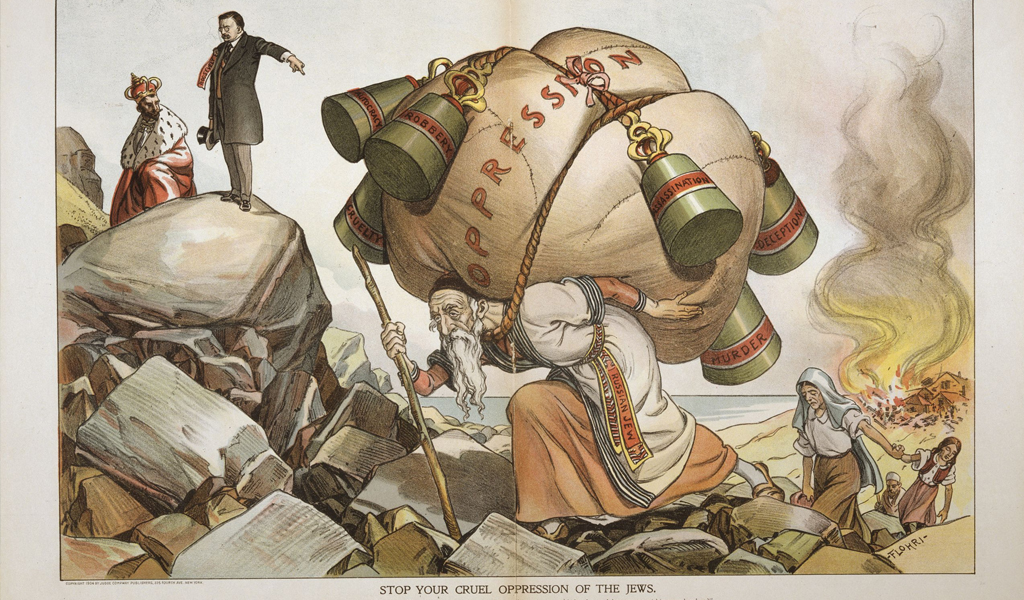
The pogroms in Russia in the 19th century
The persecution of Jews was particularly devastating in 19th century Tsarist Russia, which at the time also included Ukraine, Poland and Belarus. The first pogrom took place in Odessa in 1821.
After Tsar Alexander II was assassinated in St. Petersburg on March 13, 1881, persecution of the Jews began in one part of the Russian Empire and lasted for several years. The perpetrators, some of whom were supported by the police, raped and murdered the Jews and stole their property.
Tens of thousands of Jews were murdered almost half a century later during the Russian Civil War. At that time, it was mainly Ukrainian nationalists, but also Poles and Red Army soldiers, who persecuted and killed Jews in what is now Belarus and western Ukraine (then Polish Galicia).
The persecution of Jews was particularly devastating in 19th century Tsarist Russia, which at the time also included Ukraine, Poland and Belarus. The first pogrom took place in Odessa in 1821.
After Tsar Alexander II was assassinated in St. Petersburg on March 13, 1881, persecution of the Jews began in one part of the Russian Empire and lasted for several years. The perpetrators, some of whom were supported by the police, raped and murdered the Jews and stole their property.
Tens of thousands of Jews were murdered almost half a century later during the Russian Civil War. At that time, it was mainly Ukrainian nationalists, but also Poles and Red Army soldiers, who persecuted and killed Jews in what is now Belarus and western Ukraine (then Polish Galicia).
In 1903, the so-called “Protocols of the Elders of Zion”, which were intended to prove a Jewish world conspiracy, appeared in the anti-Jewish press of Tsarist Russia as probably the most momentous forgery in world history. These “Protocols”, supposedly written down by Jews, were in fact written by the Tsar’s secret police in order to inflame the mood against the Jews.
The “Reichskristallnacht”: November 9/10, 1938
The most famous pogrom of the 20th century is the so-called “Reichskristallnacht” (also: “Crystal Night”) from November 9 to 10, 1938, when acts of violence were committed against Jews throughout the German Reich and Jewish stores and synagogues were vandalized by the leadership of Adolf Hitler’s National Socialist regime (NSDAP).
The violence was primarily triggered by NSDAP functionaries and members of the SA (Sturmabteilung) and Hitler Youth. It was subsequently claimed that the riots against the Jews were a spontaneous reaction to the fact that a German embassy official in Paris had been murdered by a young Polish Jew.
The “Final Solution to the Jewish Question”
The persecution and extermination of the Jews had been an integral part of Adolf Hitler’s and the National Socialists’ policies since they came to power in 1933. Their hatred of the Jews was mainly due to the fact that they held the Jews responsible for Germany’s defeat in the First World War.
As early as 1935, three years before the Reichskristallnacht, the National Socialists had therefore passed the so-called “Nuremberg Race Laws” at an NSDAP party conference in Nuremberg, which discriminated against Jews in many ways.
In the years that followed, the Jews were persecuted more and more systematically. With the beginning of the Second World War on September 1, 1939 and even more so with the start of the German campaign in Russia in 1941, this persecution took on a new dimension.
Mass shootings of the Jewish population took place in more than 1,500 Eastern European towns and villages. The Nazis were often supported by collaborators from the countries they had conquered or were allied with, or they themselves were responsible for the murders: Romanians, Poles, Ukrainians, Lithuanians, Estonians etc.
The systematic extermination of European Jews, which was later referred to as the “Final Solution to the Jewish Question”, had already been decided by the German government at the beginning of 1941. At the end of the same year, it began building so-called “extermination camps” in occupied Poland. The best known to this day was the Auschwitz-Birkenau camp.
At the beginning of the next year, on January 20, 1942, high-ranking representatives of the National Socialist regime met for a secret meeting in a villa on Wannsee in Berlin. It was decided in detail how the systematic murder of all European Jews was to be organized and what logistics were needed for this. This meeting has gone down in history as the “Wannsee Conference”.
By the time Nazi Germany surrendered on May 8, 1945, more than six million Jewish children, women and men had fallen victim to the persecution of the Jews.
Yad Vashem – a place of remembrance and teaching
For further information
The most important Holocaust memorial and educational site is located in Jerusalem and is called Yad Vashem. It commemorates the six million innocent people who were murdered, but also the many people who saved hundreds of thousands of Jews from death at that time and are honored as “Righteous Among the Nations”. The tasks of Yad Vashem include not only remembrance, but also extensive research into the Holocaustas which the systematic mass murder of the National Socialists is often referred to (another term is the Shoah), so that it can never happen again.

